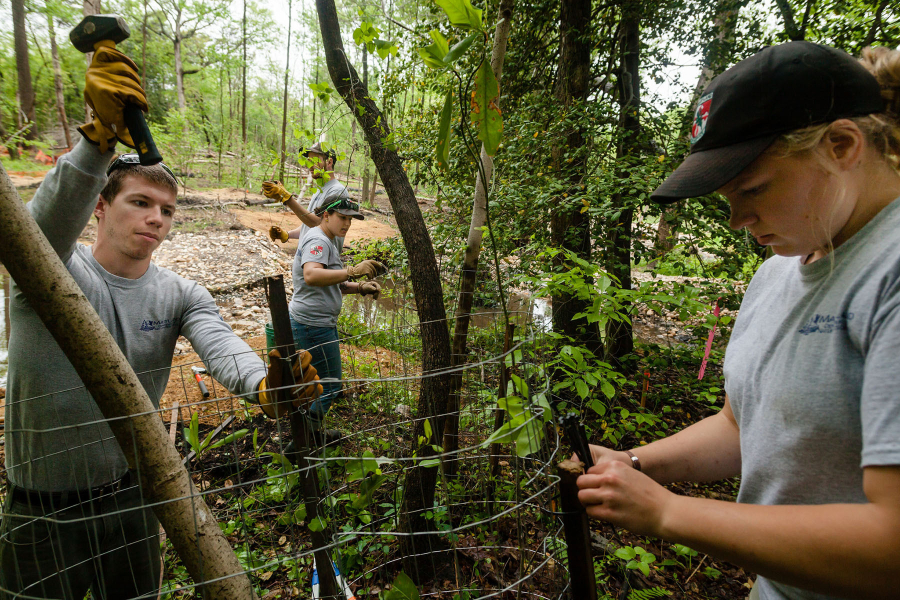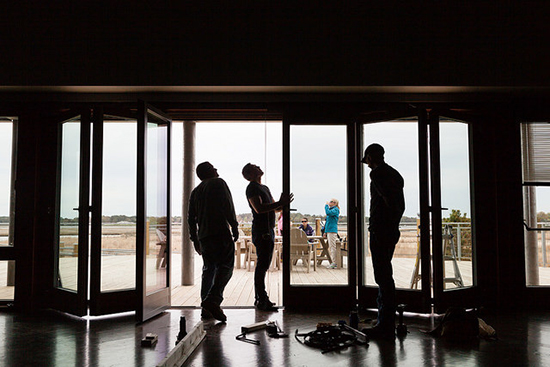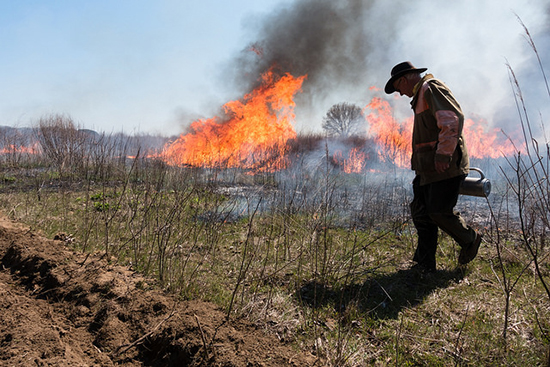Six environmental jobs you might not have heard of
Work to save the Bay with one of these green jobs

The environmental field is full of jobs that are personally fulfilling and make a difference at every scale. While some—like wildlife biologist or clean water activist—seem obvious, there are some not-so-obvious green collar jobs that have a lasting impact. Here, we’ve pulled together a list of some of those uncommon and unique ways of working in the green sector.
Conservation Corps volunteer
In the spirit of AmeriCorps, the Chesapeake Conservation Corps is a program that prepares young adults looking to enter the environmental field. Volunteers gain leadership and job training through a year of service, for which they receive a stipend. They are assigned to an organization in the Chesapeake region ranging from county governments and museums, to environmental nonprofits and nature centers.
Look for similar opportunities with the Delaware Conservation Corps, Maryland Conservation Corps, New York’s Excelsior Conservation Corps, Pennsylvania Outdoor Corps and Citizens Conservation Corps of West Virginia. Virginia has a similar program, the Service and Conservation Corps Veterans Crew, for military veterans.
Arborist
Arborists are responsible for managing and maintaining trees in a given area. Some arborists consult with local governments, landowners and utility companies to plant trees that won’t eventually tangle with power lines or require more space than is available. Others take a more hands-on approach and focus on planting and pruning street trees or treating sick ones.
Working with trees is a great way to work in and with communities to create a more beautiful space. In recent years, organizations like Blue Water Baltimore and Washington Parks and People have used job programs centered around trees to help people who live in underserved areas or who were released from prison to gain skills and job experience while benefitting their communities.
LEED credentialed professional

Construction is a field that is full of careers that affect the environment. Beginning with the architect who designs the building and the forester who manages timber supplies, all the way to the client who maintains the building, each stage of the construction process holds an opportunity to be green. One way to set yourself apart and help the environment is to have LEED certification.
LEED stands for Leadership in Energy and Environmental Design, which is a rating system created by the U.S. Green Building Council to determine the environmental performance of a building and encourage more sustainable design. It is a system that covers almost the entire lifespan of a building, including citing, construction, materials and maintenance. Once construction is complete, a building can become LEED certified if it meets certain standards. When it opened in 2001, the Philip Merrill Environmental Center—the Chesapeake Bay Foundation’s headquarters in Annapolis, Maryland—was the first building in the world to receive a LEED Platinum rating.
Having LEED credentials not only helps the environment brick by brick, but can make you more marketable to employers, potentially leading to a higher overall salary. Jobs that benefit from LEED accreditation include: construction managers, architects, landscape designers, facility managers, contractors, tradesmen and engineers.
Energy auditor
While some careers focus on how we create energy, such as solar panel installers or wind turbine engineers, energy auditors focus on how efficiently we use it. They consult with property owners about ways they could improve the efficiency of their home or building.
Energy auditors inspect buildings to determine where energy is being wasted or used inefficiently. After the visit, they provide property owners with advice on upgrades to make to improve the building’s efficiency. Most of the watershed’s jurisdictions—which include six states and the District of Columbia—have residential and commercial energy audit programs, with many of them offering free or discounted energy audits for qualifying residents.
Prescribed burn crew member

While it might seem counterintuitive, fire can be used in some places around the region to restore and maintain habitats. However, these aren’t any old fires, and they definitely are not wild. These fires are set and managed by professionals on prescribed fire burn crews. Fires can provide an ecosystem with a number of benefits by helping to return nutrients to the soil, open up dense areas and control invasive species. Being a member of a burn crew is a unique way to help restore important habitat. Programs like the Natural Lands Project in Chestertown, Maryland, use prescribed burns to create habitat for breeding grassland birds.
Entrepreneur

The green career field has many opportunities for involvement including starting off on your own path. There are opportunities for new and innovative businesses in growing fields like renewable energy, or to combat food deserts by starting an urban farm.
More broadly, green entrepreneurship doesn’t need to include only businesses with titles that include the word “energy” or “conservation.” Green entrepreneurs could do just about anything as long as they have a foundation of sustainability. From aquaculture companies to area chefs, entrepreneurs across the region are incorporating sustainability into their business models. Perhaps you open a restaurant that sources only local ingredients, a bike shop that refurbishes old bikes or a hair salon that uses natural haircare products. Reducing the environmental footprint of your business, and encouraging others to do the same, is a great way to work toward a better environment.
Want to get involved in the environmental field? Our weekly newsletter, Bay Brief, is full of current environmental job openings around the Chesapeake region.
Do you work in the environmental field? Let us know what you do in the comments!

Comments
Thanks for the info, but our 32 year old son, with an AA degree in language and culture, isn't qualified for any environmental jobs that we can find. He has a passion for environmental protection and would offer a lot to any organization working to improve our environment, but without a BA or BS, he is ineligible. He is too old to get involved in an introductory program. He does not live in an underserved community, have a criminal or drug record, so does not qualify for any program directed at these populations. He would love to start farming organically, but the grants available are limited to underserved, urban and minority groups. We are not in a position financially to just buy him a farm. These programs are all great, but where can he fit in. He does not want to return to college at this point. Where can he start? Thanks for your consideration.
Thank you!
Your comment has been received. Before it can be published, the comment will be reviewed by our team to ensure it adheres with our rules of engagement.
Back to recent stories